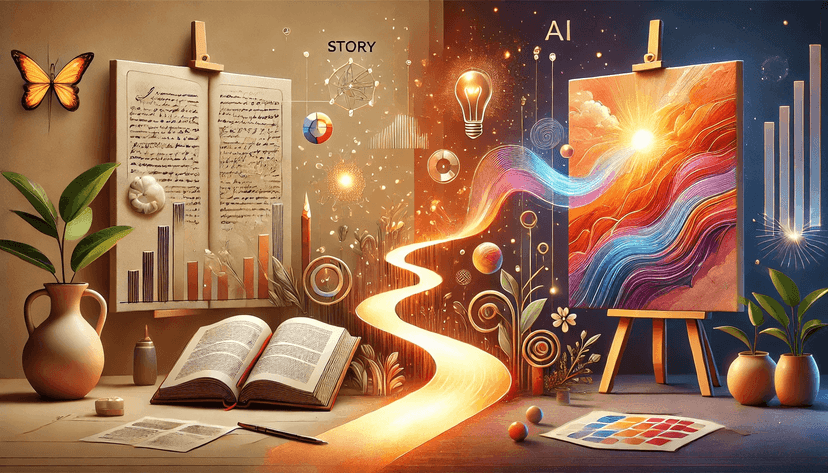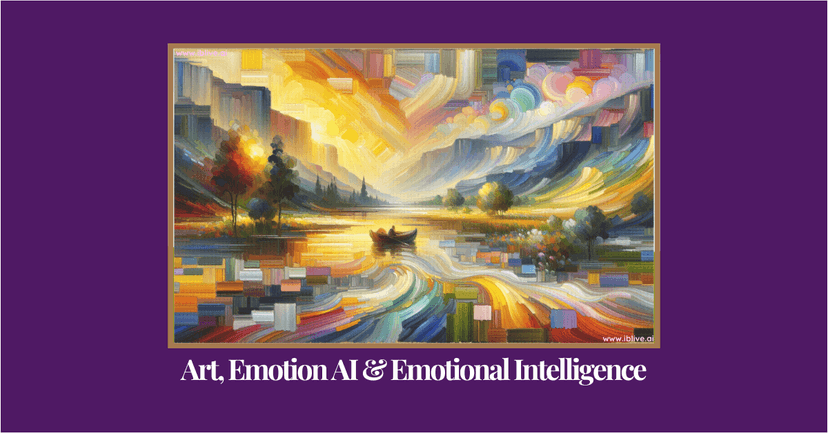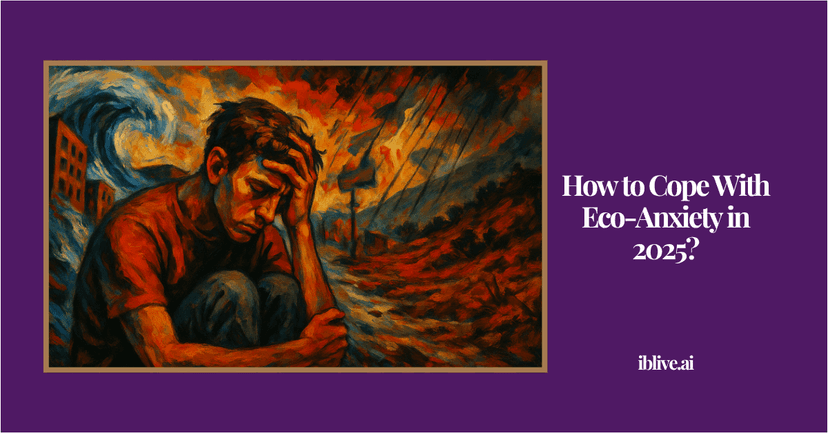
Perception vs Perspective: The Invisible Tug-of-War That Shapes Emotional Intelligence

Where It All Begins
I remember reading once that the human brain processes over 11 million bits of information every second, but we consciously register maybe 40 of those. Just 40.
That number stuck with me. Because it made me realize something fundamental about emotional intelligence that we often miss: it's not about how much we see. It's about how we see.
There’s a line between perception and perspective that, at first glance, feels academic. But if you’ve ever misunderstood someone you care about, or reacted to a situation only to regret it later, you’ve lived that line. You’ve felt the sting of misperception. You’ve also felt the quiet power of pausing long enough to see something differently.
This distinction, perception versus perspective, isn’t just wordplay. It’s the difference between reacting and responding. Between surviving and evolving.
Let’s explore it.
What Is Perception, Really?
Perception is fast. It’s sensory. It’s instinctive. It’s the gut punch, the eyebrow raise, the immediate emotional pull you feel when someone criticizes you or a message comes across as cold. Perception is your mind’s first response to incoming data. Data that comes through eyes, ears, skin, and more subtly, your emotional memory.
You hear someone raise their voice. You feel disrespected. You see a colleague ignore your idea in a meeting. You feel invisible. You get a short reply from a friend. You feel rejected.
But here’s the problem. Perception, for all its evolutionary brilliance, is a biased tool. It’s shaped by our past experiences, trauma, conditioning, and even our physical state. A tired brain perceives differently than a rested one. A person who has been hurt before may read danger into a harmless situation. This is where things begin to crack.
So What Is Perspective?
Perspective is slower. It’s deliberate. It’s reflective. It’s the act of stepping back and asking, “Is there another way to interpret this?”
Where perception is the camera lens, perspective is the angle we choose to hold the camera. It allows you to pause after that raised voice and wonder: "Maybe they’re stressed. Maybe it’s not about me."
It lets you reframe your colleague’s interruption as urgency, not disregard. It helps you interpret your friend’s short message as being busy, not distant.
Perspective is not just empathy or optimism. It’s the cognitive skill of seeing complexity where perception seeks simplicity. And in that, it’s deeply tied to the core of emotional intelligence.
The Tension Between the Two
Emotional intelligence begins at the collision point of perception and perspective.
Perception says: "This is how I feel." Perspective asks: "Why do I feel this way? And is it the ONLY truth?"
Perception is important. Without it, we wouldn’t survive. It helps us detect threats, read emotions, and stay alert. But when we live only in perception, we’re hostages of our emotional reflexes. Our actions are shaped by the rawness of our interpretations.
Perspective gives us freedom. It creates space between stimulus and response. It doesn’t negate our perception but it builds on it. It gives us the tools to assess, recalibrate, and sometimes rewrite our stories.
But here’s where it gets interesting. Most people don’t realize that both can co-exist. They think one must dominate the other. And that’s not true. Emotional intelligence is the ability to navigate this duality. To catch perception, invite perspective, and then choose action wisely.
The Brain Science Behind It
Neuroscience backs this up. Your amygdala is the emotional smoke detector. It lights up within milliseconds of a perceived emotional threat. It’s where perception happens. It’s raw, fast, and usually right, but not always.
Then comes your prefrontal cortex, especially areas like the medial PFC. That’s where perspective-taking lives. This region helps you consider social context, predict others’ intentions, and evaluate long-term consequences. It’s slow, effortful, and incredibly human.
Studies by Ochsner and Gross show that when we practice cognitive reappraisal (which is just a fancy term for changing perspective), we see reduced amygdala activity and increased activity in the prefrontal cortex.
TranslationItalic: we get better at handling emotions the moment we switch lenses.
Why Most People Struggle With This
Because perception feels real. And because perspective feels like effort.
Most of us were never taught how to notice the gap between them. We were praised for emotional honesty, not emotional regulation. We were told to follow our gut, not question it. We live in a culture that glorifies speed, and perception is fast. Perspective takes time. And space. And self-trust.
But without perspective, we overreact, miscommunicate, judge unfairly, and damage relationships. With too much of it and not enough perception, we become emotionally detached, numb, and overly analytical. Healthy emotional intelligence requires a conversation between the two.
Micro-Journaling as a Bridge
One of the most powerful ways I’ve found to build this bridge is micro-journaling. Not pages of writing. Just a few lines. A check-in. A scan of our current emotional state. And then, this is key, a reflection on what else could be true.
What am I feeling? Why might I be feeling this? Is there another angle I’m missing?
This small habit rewires the brain over time. It trains you to catch perception in the act and introduce perspective before things spiral. In those few lines, you move from automatic to aware. And awareness is everything.
Where We're Taking This With iblive AI
We've been quietly working on something at iblive AI that leans into this. After you write a micro-journal entry, with out guided prompt, our system now identifies emotional patterns, either strengths you’ve demonstrated or distortions in your thinking. From there, we guide you into a weekly challenge designed to help you shift your perspective, grow your emotional insight, and practice that shift in real life.
These challenges are rooted in principles from cognitive behavioral therapy, but made light and reflective. It’s not therapy. It’s training your inner lens. And that’s what emotional intelligence is: lens work. The update is going live soon. But this article isn’t about a product. It’s about a mindset. A way of noticing how we make meaning.
Why This Matters More Than Ever
In a world of overwhelming information, quick reactions, and surface-level communication, the ability to distinguish perception from perspective is a superpower.
It’s what helps a leader pause before reacting. It’s what helps a partner listen rather than defend. It’s what helps a parent respond with curiosity, not control. And it’s what helps each of us grow, one quiet emotional insight at a time.
One Final Thought
Every day, you and I are confronted with moments that beg for perspective, moments where perception wants to take the wheel. That quick comment. That unread message. That awkward silence. The question isn’t whether perception is right or wrong. The question is, can we catch ourselves in the act? Can we pause long enough to wonder, what else could be true?
That’s not just emotional intelligence. That’s emotional maturity. That’s what turns data into wisdom. That’s what we need more of, at work, at home, and in life.
And it begins with a single question: Is this my perception talking? Or my perspective speaking?
If you sit with that, truly sit with it, something shifts. Not immediately. But over time. And that’s when emotional intelligence stops being a buzzword and starts becoming a way of living.
If you're curious about exploring this further, try it the next time you journal. Write how you feel. Then write what else might be true. And just notice what happens.
That small space you create? That’s where emotional intelligence lives. That’s the space we're designing for. And if you ever feel stuck, iblive AI might just be the mirror you didn’t know you needed.
Thank you for reading, share the article in your social circle, and help someone decode their feelings.
Related Article
View All
10 Feb 2025
From Canvas to SoulPersonalization is the cornerstone of meaningful experiences today. From tailored playlists to custom skincare, individuals crave products and services that reflect their unique identity. But what if personalization could extend beyond the tangible and into the emotional world? This is where iblive steps in, turning your stories and emotions into stunning original paintings.

01 Mar 2025
Transform Your Space & Celebrate Moments with Personalized Canvas PrintsIn a world of customization and personal expression, canvas prints have evolved from simple decorative elements into powerful reflections of identity, emotion, and cherished memories. These personalized art pieces offer a uniquely intimate way to enhance living spaces, creating environments that truly feel like home. Whether you're looking to refresh your surroundings, surprise someone special with a meaningful gift, or commemorate life's precious milestones, custom canvas prints blend artistic elegance with deep sentimental value. This comprehensive guide explores the transformative power of personalized art, the diverse styles available to match any aesthetic, and why customized canvas prints consistently rank among the most treasured gifts for all occasions. We'll also delve into how cutting-edge technology like iblive AI enhances self-expression by enabling people to create emotionally resonant, personalized artwork that speaks directly to their experiences and memories.

04 Mar 2025
What's Emotional Intelligence: How AI, Art, and Personalization Are Transforming Emotional Well-BeingIn a world increasingly dominated by technology, the human element—our emotions—has often been sidelined in the digital transformation narrative. Yet, a revolutionary convergence is taking place at the intersection of artificial intelligence, emotional psychology, and artistic expression. This convergence is not just reshaping how we understand our emotions but is fundamentally transforming how we experience well-being in our personal and professional lives. At the forefront of this transformation stands iblive.ai, an innovative platform redefining emotional intelligence through AI-generated art.

13 Feb 2025
AI Art Therapy: Transform Your Emotions into Visual MasterpiecesAre you tired of oversimplifying your emotions? Do you struggle to articulate the complex feelings swirling within you? You're not alone. Most of us only scratch the surface of our emotional landscape. But what if there was a way to truly understand and express the full spectrum of your feelings?
Enter iblive.ai, an emotional AI Art platform that transforms your personal narratives into stunning works of AI art therapy. Using patented technology, iblive.ai analyzes your stories and translates them into unique visual representations of your inner world, helping you unlock deeper emotional awareness and emotional regulation.

14 Mar 2025
Explore Art Styles on iblive AIThe Emotional Infusion in AI Art Creation Artificial intelligence and creative technology is evolving very rapidly. And in this a meaningful platform stands out for its unique approach to AI art creation. iblive AI has pioneered a beautiful concept: transforming your emotions into stunning visual masterpieces. Unlike conventional AI art generators that rely solely on text prompts or image references, iblive AI delves deeper, mapping the intricate landscape of human feelings and translating them into diverse artistic styles.
TL;DR: The Emotional Art Revolution iblive AI transforms your emotions into stunning visual art through advanced emotional mapping technology. -Nine distinctive art styles interpret your feelings in unique ways, from classic to cutting-edge. -Impressionist Interpretation creates dreamlike moments with soft brushstrokes and delicate light play. -Abstract Facial Expressions distort and morph faces to reflect emotional intensity. -Abstract Expressionism captures raw emotional energy through unrestrained strokes and bold contrasts. -Post-humanist Abstraction offers a futuristic fusion of organic and digital aesthetics. -Gesture-driven Figures use calligraphic strokes to bring movement and emotional intensity to life. -Figurative Abstraction creates recognizable yet fluid figures that distort with emotional currents. -Fragmented Figures mirror emotional complexity through shattered, layered compositions. -Minimalism distills emotions into pure form, embracing negative space and harmonious balance. -"Surprise Me" option lets the AI select the perfect style for your unique emotional signature.

26 Mar 2025
The Skill 84% of Us Are Ignoring (And Why It Matters)Let’s be honest. We all want to succeed. In work, in relationships, in life. But what if one of the most important habits for that success is something most people never build?
In 2025, only 16% of people journal regularly. That’s not a random stat—it’s a signal. Because journaling isn’t just about writing. It’s about processing emotions. And emotional clarity changes everything.
Why Emotional Intelligence Is Your Hidden Advantage
Whether you're a student, a team leader, or figuring life out on the go, your emotions drive your decisions more than you think.
Research shows that people with high emotional intelligence (EQ) are: - Better at communicating - Calmer in high-pressure situations - More resilient when life throws curveballs
But here’s the twist: - Most people don’t even know what they’re feeling in the first place. - We’re not short on emotion. - We’re short on ways to express them.

13 Apr 2025
Emotional Intelligence in 2025Why Micro-Journaling Is the Mental Health Breakthrough We Didn’t Know We Needed
Discover how AI-powered micro-journaling is reshaping emotional wellness, clarity, and resilience—one reflection at a time.

21 Apr 2025
What is Emotional Intelligence and How AI is Helping Us Build It in 2025Emotional Intelligence (EI), once a concept relegated to psychology departments and leadership seminars, has now entered the mainstream of daily life. In 2025, it's no longer just a soft skill; it's a survival tool. From managing workplace stress to navigating complex social environments, EI is the bedrock of well-being, empathy, and decision-making. Yet, for all the content online, articles, books, and seminars, the real challenge remains:
How do we practice EI? How do we build it into our everyday lives?
That’s where iblive.ai comes in. It combines three powerful ideas: micro-journaling, emotional AI, and generative emotional art. Bold Together, they offer a radically new, accessible, and personal way to build emotional intelligence in just a few minutes daily.

02 May 2025
The Last Human Advantage - Emotional IntelligenceI Didn’t Always See It This Way
TL;DR

31 Jul 2025
How to Cope With Eco‑Anxiety in 2025: AI and Micro‑Journaling Can Turn Climate Disasters Into Emotional StrengthClimate disasters and climate anxiety are dominating the news
These stories aren’t just sensational headlines; they’re personal for many of us. Maybe you have family in California watching tsunami warnings, or friends in India navigating flooded roads. Or perhaps you simply felt a tightness in your chest when you saw those images on your phone. This emotional response, often labelled eco‑anxiety or climate anxiety, is becoming increasingly common.
A global survey of 16–25‑year‑olds found that 60 percent were “very worried” about climate change, neurostimtms.com. Nearly half said their worry negatively affects their daily life. Those numbers are likely even higher now, after a year filled with news of record heat waves, hurricanes, and wildfires. If you’ve ever felt a surge of fear while reading about a far‑away flood or a local drought, you’re not alone. Many of us are grappling with a new kind of stress that is both deeply personal and profoundly global.

 BannerForm_30a9a9bef3.png" alt="Emotional Intelligence Webinar" class="max-w-full h-auto rounded-lg my-2" />
BannerForm_30a9a9bef3.png" alt="Emotional Intelligence Webinar" class="max-w-full h-auto rounded-lg my-2" />